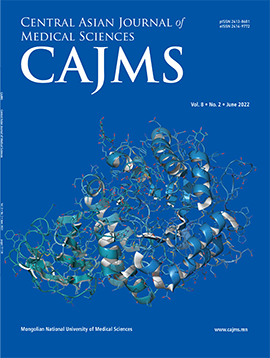Antineoplastic Properties of Phyto-synthesized Silver Nanoparticles from Hibiscus Sabdariffa Linn. Bark Extract
DOI:
https://doi.org/10.24079/cajms.2018.12.006Keywords:
Hibiscus Sabdariffa, Silver Nanoparticle, Green Synthesis, UV-Visible, Bark ExtractAbstract
Objectives: In recent years, green synthesis of silver nanoparticles (AgNPs) has gained much interest from researchers as biomedical treatments. The purpose of this study was to determine if AgNPs synthesized from Hibiscus Sabdariffa L. bark extract are an effective stabilizing agent and inhibit Ehrlich ascites carcinoma (EAC) cell growth. Methods: AgNPs were prepared by the reaction of 0.6mM silver nitrate and 5% bark extract. Synthesis of AgNPs were confirmed by UV-visible spectroscopy as well as characterized by scanning electron microscopy, x-ray diffraction, and fourier transform infrared spectroscopy. AgNPs was applied on 1,1-diphenyl-2-picrylhydrazyl (DPPH) and 2,2'-azino-bis (3-ethylbenzothiazoline-6-sulphonic acid) (ABTS) experiments to determine its antioxidant activity as well as its cytotoxic effect against EAC cells. In vivo, the antineoplastic effect of AgNPs was tested against EAC cells. Results: The synthesized AgNPs have a surface plasmon resonance band centered at 475 nm. Fourier transform infrared spectroscopy (FTIR) spectra showed major peaks of phytochemicals and proteins involved in AgNPs biosynthesis by identifying different functional groups involved in effective capping of AgNPs. The scanning electron microscope (SEM) analysis of AgNPs showed spherical nanoparticles with mean size 90.82 nm. The DPPH and ABTS assays revealed the antioxidant activity of AgNPs with IC50 31.74±2.06 and 15.45±2.72 μg/ml that was comparable to catechin. The synthesized AgNPs exhibited effective cytotoxic activity against EAC cells and the inhibitory concentration (IC50) was recorded at 32.00 µg/ml. AgNPs showed effective cell growth inhibition, increased life span, reduced tumor weight, restored all hematological characteristics to normal level and also induced apoptosis of EAC cells. Conclusion: This study proves that the phyto-synthesized AgNPs show effective anticancer properties against EAC cells.
Downloads
278
Downloads
Published
How to Cite
Issue
Section
License
Copyright (c) 2018 Mongolian National University of Medical Sciences

This work is licensed under a Creative Commons Attribution-NonCommercial 4.0 International License.




